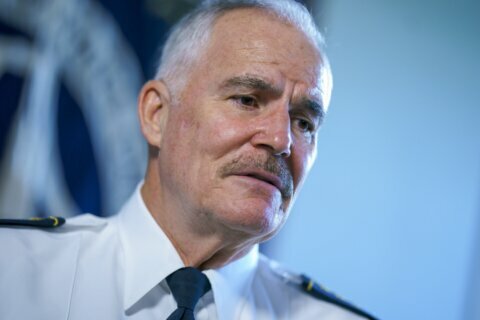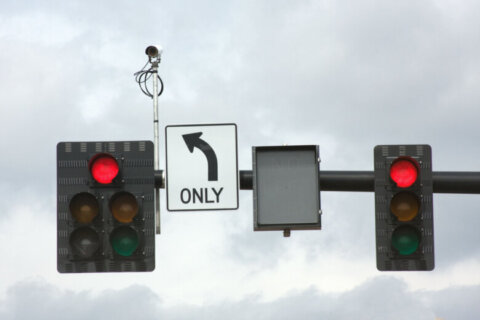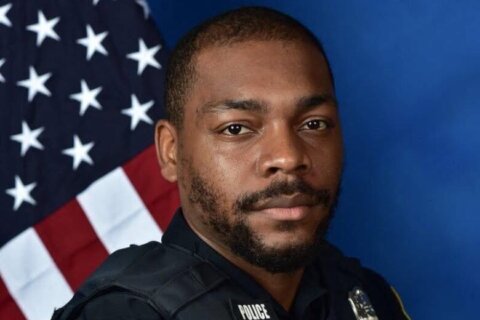Phase Two of D.C.’s coronavirus reopening begins on Monday, Mayor Muriel Bowser announced Friday.
The loosening of restrictions allows certain businesses to reopen with restrictions, and activities to resume under specified conditions outlined at coronavirus.dc.gov/phasetwo.
2/ The District has experienced 15 days of sustained decrease in community spread of COVID-19 during Phase One. That data is represented in the chart below. pic.twitter.com/rVGdbgdiau
— Mayor Muriel Bowser (@MayorBowser) June 19, 2020
While the District has met 15 days of a decline in community spread, it did not meet its desired metric in contact tracing. The city is hiring 60 to 100 more contact tracers to reach out to residents who have tested positive for COVID-19, to identify any people and places they made contact with while potentially contagious.
“Now that we have a more robust workforce, we have been reaching out to individuals who were previously diagnosed to understand where they are in their recovery and isolation,” Dr. LaQuandra Nesbitt, director of D.C. Health, said at a press conference Wednesday.
Under D.C.’s Phase 2 …
- Indoor dining is allowed.
- Shopping is allowed inside non-essential businesses.
- Houses of worship can host up to 100 people.
- And parks, pools, libraries and gyms can open, but with restrictions.
- Sign up for WTOP alerts
- Latest coronavirus test results in DC, Maryland and Virginia
- Coronavirus FAQ: What you need to know
- Coronavirus resources: Get and give help in DC, Maryland and Virginia
- Northam moves to make Juneteenth a state holiday; no Phase 3 this week
- Montgomery Co. to enter Phase Two on June 19
- What Loudoun County schools plan to do next school year
Looking for more information? D.C., Maryland and Virginia are each releasing more data every day. Visit their official sites here: Virginia | Maryland | D.C.
The mayor provided more detail on Wednesday to allow businesses and residents to prepare for Phase 2.
Restaurants are able to host guests for indoor dining at 50% capacity. Mass gatherings will be limited to 50 people. Nonessential businesses, in addition to curbside pickup, can have patrons and customers inside at 50% capacity for personal services. Appointments and station distancing at 6 feet will still be required.
Other personal services such as tanning, tattoo parlors, waxing, threading, cryotherapy, facials, and nail salons will be able to reopen.
For fitness and recreation, gyms and health clubs — as well as yoga, dance and workout studios — can open with a capacity limit of five people per 1,000 square feet. Classes will also need to be limited, with a 10-foot distance between patrons.
Parks and Recreation Department pools will be able to open for what Bowser called “structured activities” such as lessons and lap swimming. A plan for what that should look like is in the works. She did not elaborate on the parameters for private pools, at apartment buildings and clubs for example.
Playgrounds, courts and fields will be open for casual play. League sports will not yet be allowed, but low- to moderate-contact sports will be allowed for casual play.
Indoor services will be allowed at houses of worship, though Bowser said, “We encourage virtual services to continue.” There will be a 100-person, or 50% capacity, limit, whichever is less. Choirs, singing and shared items are also discouraged at those services.
Guidance for child care centers includes daily health screenings:
- Child care providers should perform a daily health screen for all children and staff entering
the facility. Anyone with possible COVID-19 symptoms should not enter the facility and contact their health care provider. - If someone develops any symptoms, there should be a plan in place for that person to immediately isolate and then leave the facility. Seeking medical attention next is recommended.
Nearly 10,000 D.C. residents have tested positive for the virus in total. Of them, 530 have died. Bowser acknowledged at a press conference Wednesday that residents are not out of the woods; she said without a vaccine, there could be no assurances of safety.
“We are concerned, of course, that more people would get sick, and that’s why we continue to focus on people wearing masks, washing their hands, staying home when sick and following these guidelines very carefully,” Bowser said.









